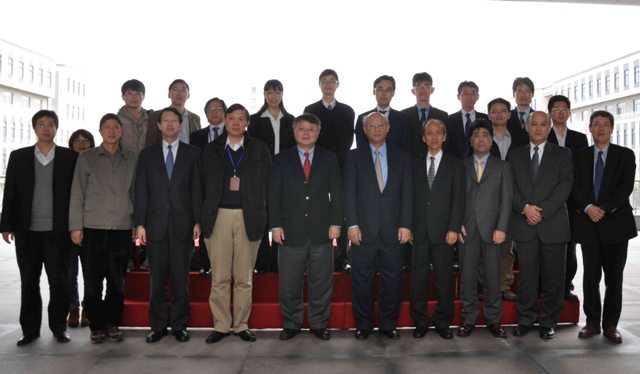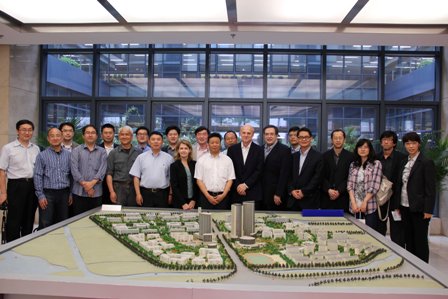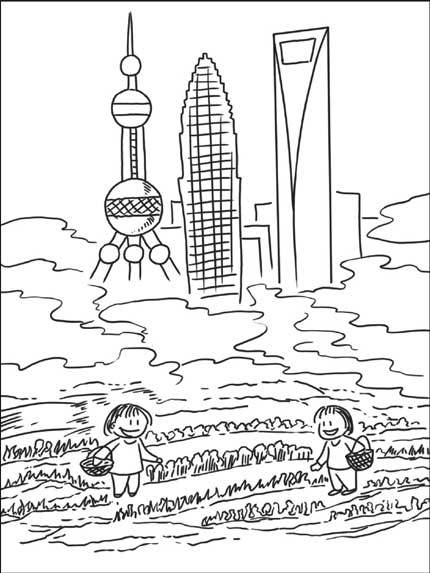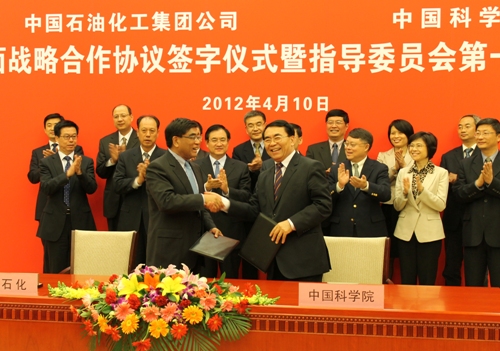A few years ago, a government plan to build a garbage incinerator close to residential areas in Panyu District in Guangzhou City triggered a furor and the plan was scrapped due to strong opposition.
Building solid waste disposal plants near or inside cities has since been anathema in urban planning. But here in Shanghai, that's exactly where some planners would like to place such a facility.
Another eggheads' pipe dream, you might say, but Li Kexin is convinced that a downtown trash facility is the first step toward leveraging what he calls the "unit city" development strategy. Li is a senior local political adviser and head of the Low-Carbon City Research Center of Shanghai Advanced Research Institute, jointly established by the Municipal Government of Shanghai and the Chinese Academy of Sciences.
A unit city is made up of areas that are self-sufficient in localized garbage treatment and energy generation. In addition, people live and work largely within their confines, rendering obsolete long and arduous commutes between workplace and home.
Usually, urban garbage is carted away and dumped in faraway landfills, but limited land supply means this disposal method is unsustainable. Shanghai produces about 2,000 tons of trash a day, which makes its way to Laogang in Pudong, site of the city's biggest landfill, Li told Shanghai Daily.
However, as Laogang is overburdened, the city is hatching plans to build another landfill, maybe more, in its suburbs. This is ferociously resisted by local residents on public health grounds. And rightly so, asked Li: why can garbage produced in Huangpu District be dumped in Jiading, and for that matter, Jing'an's be hauled to Jinshan?
In response, maybe we can build an underground trash reprocessing plant in the expanse of People's Square opposite the municipal government headquarters, Li said.
"Many people ridicule my suggestion as absurd, but 10 years from now, they won't scoff anymore. It may well become a reality," he said.
A downtown trash facility isn't such an eyesore as many would have thought. Quite the opposite. It would be the best advertisement of Shanghai's trash disposal technology. After all, who would risk putting a scrap yard right under the mayor's nose if it's squalid and stinks?
Besides, garbage can be recycled and reprocessed for human use. "I often say the assertion that 'garbage is a resource dumped at wrong places' is wrong. What's really wrong is the location where we choose to have a disposal plant," Li said.
Li said he got this audacious idea from a recent visit to Tokyo, Japan, where he was stunned to find a corner of a park converted into a rubbish disposal facility, so beautifully constructed that it looked like a fairy tale palace, with not a whiff of stench. Later he learned that Tokyo was forced to handle its trash locally following protests from adjacent smaller cities against becoming the metropolis' junk fields.
For Li, utilization should come before disposal, and this principle applies to rainwater as well, which is simply discharged into rivers - a sheer waste of an otherwise useful resource. Why not make urban roads water-permeable, so that rainwater can replenish the aquifer, rather than threaten the oft-overwhelmed urban sewage system? Urban diseaseLocalization offers the best cure for many of the malaises known as "urban disease," all of which result from population pressure. China's urbanization rate stands at 47 percent. The number is expected to soar as 100 million rural dwellers will migrate to cities in the next 10 years. As cities grow in size to accommodate the new arrivals, their common strategy is to build satellite cities, linked with downtown by expressways. This development model has been criticized for creating more problems than it's solved. Explosive growth of cars for commutes leaves urban traffic severely snarled.Unit cities may address this predicament by encouraging - not ordering - people to go about their business in a fixed area, namely, the individual units.
In order for that to happen, "units" must be designed for both working and living. Alas, many areas and districts in Shanghai are meant for specialized functions.
For instance, the Lujiazui financial zone and Zhangjiang High-tech Park are bustling in the day but when night falls, they become deserted like ghost towns, Li said.
The ultimate goal of forming separate units within cities is to mingle working and living. Besides, it's mandated by the fact that megalopolises face ever higher security risks. If one of Shanghai's pylons is sabotaged, half of the city will be crippled by a blackout. Imagine the consequences of the metro ceasing operation for 10 minutes, Li said.
In a unit city, if every unit can generate some power for its own use, it is less vulnerable to massive power stoppages. Pioneering as it appears, the very idea of unit city is sometimes a hard sell, mainly because our urban planners haven't kept up with the times, Li said.
Lujiazui may have been their pet project 20 years ago, but it won't stay advanced for ever. Urban planning has to constantly adjust to new conditions brought about by a fast changing economy.
China's existing urban planning philosophy was imported from the Soviet Union, which stresses rigid "scientific" planning of everything. In the 1960s, the fad in urban planning was division of labor between districts. But any planning is inevitably influenced by market forces and the "division of labor" model gradually fell out of favor. The trend now is to mix different social functions in a given district or block, said Wang Jun, assistant researcher under Li.
The underlying logic is roughly the same as what unit city endorses. Shanghai's urban planning model has to change, but how? It assigns clear-cut roles for districts and areas, for instance, Lujiazui is for finance, Zhangjiang for high-tech, Minhang for living and Jing'an for office work, with little crossover. How to break this entrenched model?
Of course, commuting, refuse disposal, and energy and food production cannot be 100 percent localized. But we can at least localize sections of these enterprises.
Li's ingenuous advice that is likely to be welcomed by housewives at a time of high inflation is to set up vegetable farms in the central city. This idea conforms to the current Western trend, which calls for cities to reduce reliance on the outside world for food.
For instance, in Britain there is a coinage of the term "urban village." In Seoul, South Korea, people are planting wheat in outlying green belts. When autumn comes, the billowing wheat takes on a golden yellow, which is aesthetically pleasing and also contributes to Seoul's food supply, said Wang.
Since seasonal vegetables are now available around the year, thanks to new planting techniques, children have a poor understanding of the climate differences between seasons, Li said.
According to him, cities are theoretically space where people live their joy and sadness and experience the vagaries of life, but they are now meticulously designed to leave no room for human emotions other than materialist wants.Bike lanes For this reason, during a government meeting last Tuesday, he called for the creation of a slow-paced life zone in central Shanghai, which would require carving out a big chunk of territory that runs from west on Jiangsu Road to east at the Bund, from north on Nanjing Road to south on Huaihai Road. In the envisioned zone, bike lanes would outnumber highways, and life would be laid-back. People commute on foot and by bike.
To be sure, that doesn't mean we should knock down the existing architecture to make way for an immense pedestrian mall. Neither can we turn the entire People's Square into a landfill. But it's always worth putting novel ideas to practice on a small scale, according to Li.
And what used to be unthinkable is now made possible by the advent of sophisticated technologies. Take garbage. As long as officials change their mindset that it is a stigma to have a landfill in front of government buildings, the maturing of relevant technology is just a matter of time, Li said.
His confidence is strengthened by technological breakthroughs in cloud computing and the "Internet of things," which could improve the efficiency of regulating trash disposal and rainwater gathering and sanitation.
Nonetheless, what matters most is urban planners' attitudinal change. Many of China's cities are groaning under over-urbanization. By contrast, in Western cities like New York, urbanization has gone into reverse, a process whereby the haves live on cities' fringes and commute by car or public transport everyday. As a result, the population pressure in central cities is eased.
"We hope Shanghai can skip this stage and reach the next phase of urbanization, which incorporates unit city at its core," said Wang. Source: http://www.china.org.cn/opinion/2012-04/18/content_25174238.htm Shanghai Daily, April 18, 2012










